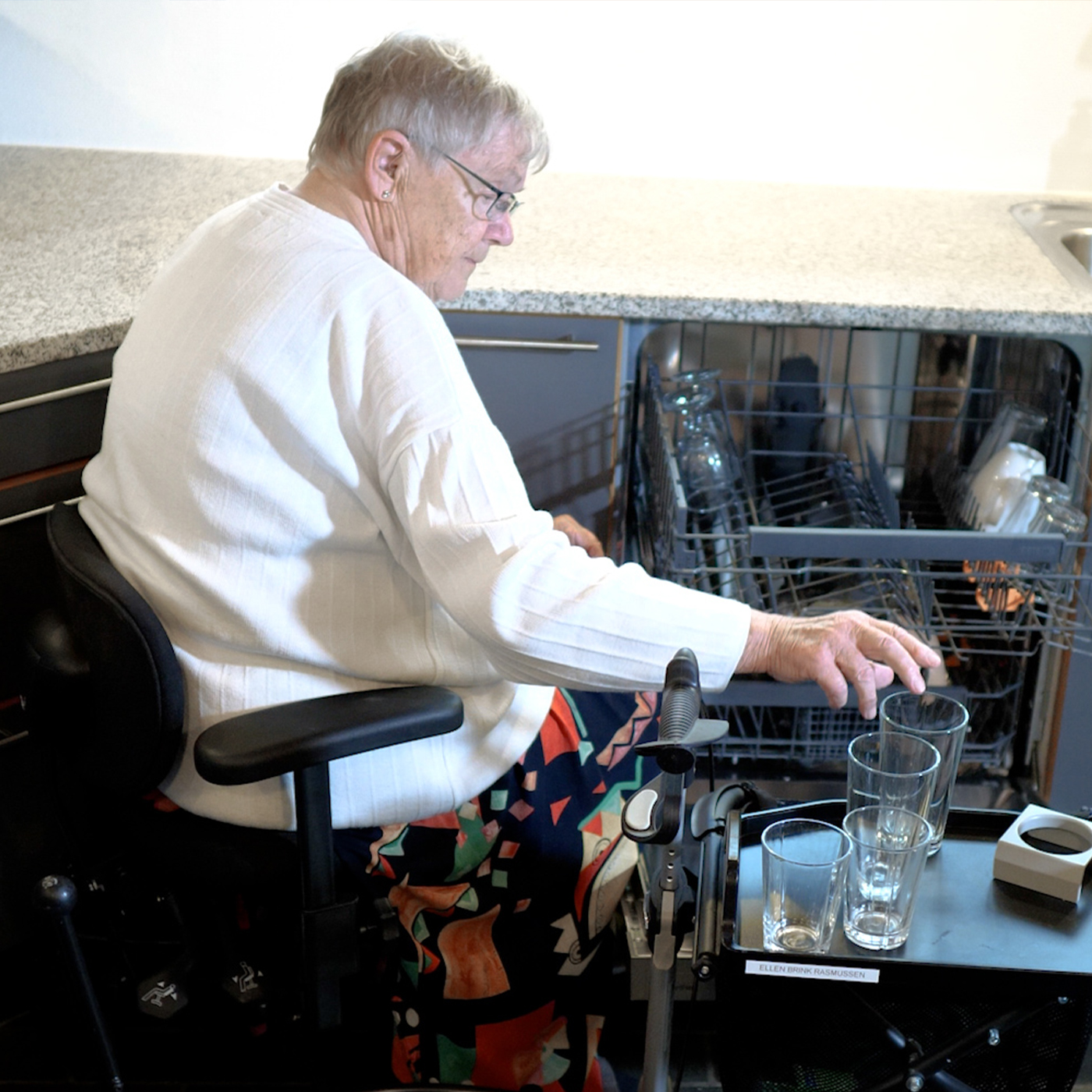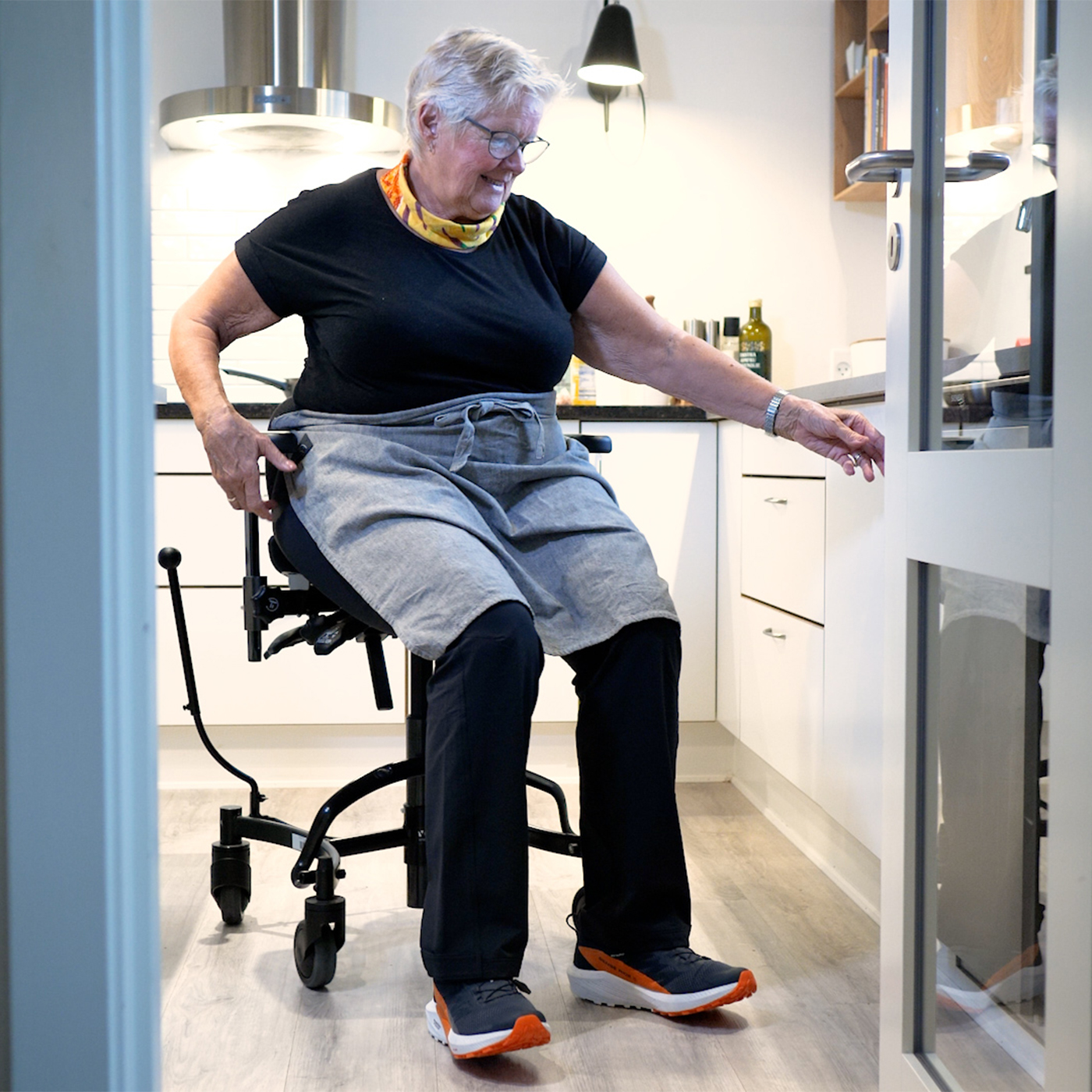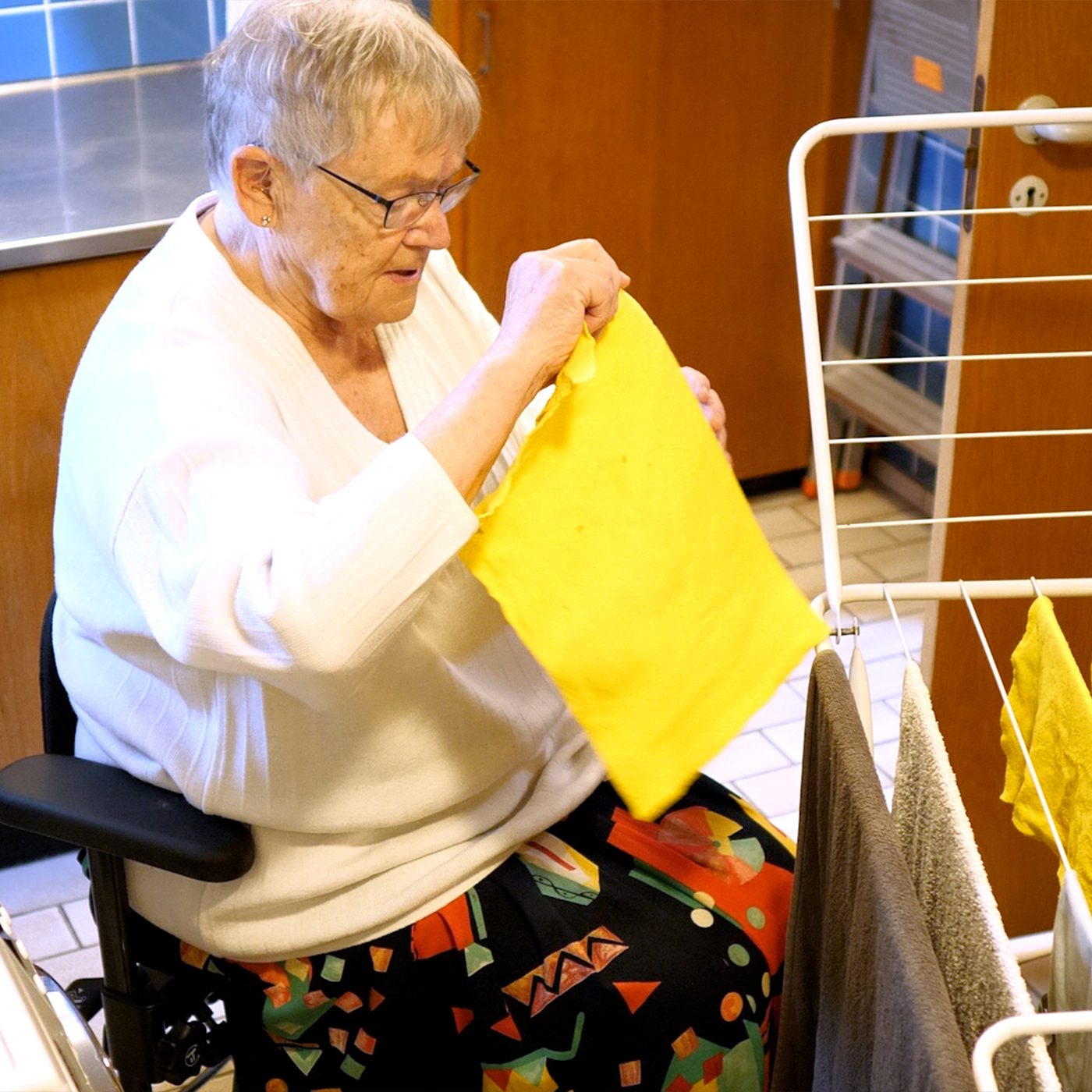New research: Users love their activity chair – and use it far more than expected
- 23. October 2025
- Reading time: 9 min.
Table of Contents
When the activity chair becomes part of everyday life
How do people actually use their activity chair once it arrives at home? And which factors make it an indispensable part of daily life?
Three researchers from VIA University College have explored this question in a new study, which, for the first time, provides a comprehensive picture of use, satisfaction, and challenges among 141 adult activity chair users in Denmark (p. 3). 1
The results are encouraging: the chair not only fulfils its purpose but often develops into a flexible tool that supports users throughout the day and across a range of household activities.
A total of 87% use the chair daily, and 97% use it on a regular basis. 84% are satisfied or very satisfied with it (p. 4).1
Provision practices and extended use
The researchers suggest that it is likely a “custom or tradition in Danish provision practice” that activity chairs are primarily prescribed for use in the kitchen (p. 5).1
When the chair is later used throughout the home, problems can arise if areas outside the kitchen were never evaluated during the original grant process.
This lack of environmental assessment probably contributed to the 65% of participants who reported barriers. The study, therefore, highlights an important point: it is positive that citizens use the chair more broadly – but to ensure they gain the full benefit and avoid unmet needs, the interaction between user, assistive device, and environment should be assessed across several activities (pp. 5–6).1
What the research shows
- 87% use the chair daily
- 84% are satisfied or very satisfied
- 87% received it for kitchen work, and 75% use it for other activities
- Most frequent additional uses: eating (51%), laundry (18%), hobbies (18%), moving around the home (13%)
- 65% experienced barriers – often due to layout or chair fit
- 28% received no instruction on delivery
- 16% received activity-based training at home
- Non-use: only 2.8% no longer use the chair
- The low rate of non-use may be linked to the chair’s appearance, which resembles an ordinary office chair. This may reduce perceived stigma and make it easier to integrate into everyday life.
Small changes can make a big difference – but better instruction is needed
Although satisfaction is high, 65% of participants experienced barriers, including lack of space, door thresholds, uneven floors, chair width or weight, and brake interference with tables (p. 5).
A central finding is the variation in how much instruction users received upon delivery:
- 28% received no instruction at all
- 5% received a personal fitting
- 34% received functional instruction
- Only 14% received both
- And only 16% received activity-based training in their home (p. 5)1
The researchers identify this as a key challenge in current provision practice:
“The study revealed significant issues related to instructions and training, as more than a quarter of participants received the activity chair without any fitting, instruction, or training.”
They note that lack of instruction not only causes a slow start, but can also result in unsafe or ineffective use – particularly among users with mobility or balance challenges (p. 6).
They therefore conclude that activity-based training in the relevant environment is critical, as it is the only way to assess the interaction between person, technology, activity, and environment (pp. 6–7).1
Why almost no one stops using the chair
A remarkable finding is that only 2.8% of participants no longer use their chair (p. 4).
This figure is significantly lower than for most assistive devices, where non-use rates are typically much higher.
The researchers believe this may be because the chair resembles an ordinary office chair and therefore feels less stigmatising (p. 6), making it easier to integrate naturally into the home and daily life.
A chair that adapts to the user
The study also shows that users often use the chair more over time as they discover new activities and adjust it to changing needs.
This means the activity chair is not a short-term solution, but rather a long-term investment in independence and quality of life. It evolves alongside the user and becomes a daily support as life circumstances change (p. 4).1
Study limitations and future focus
The researchers note that the results are based on self-reported data, which may be subject to recall bias and social desirability effects.
The sample may also be influenced by the fact that more satisfied users were more likely to participate.
As a cross-sectional study, it cannot confirm whether the chair directly increased activity levels. The authors therefore recommend future studies examining the effect of systematic training and follow-up in the actual environment where the chair is used (p. 7).1

Implications for practice
The study demonstrates that activity chairs are widely used and appreciated – often to a far greater extent than their original purpose.
This suggests that grant and provision processes should be viewed in a broader, everyday perspective, taking multiple activities into account from the outset.
When 75% of users expand their use, one chair has the potential to meet many needs within a single provision. However, if barriers remain unaddressed, users risk facing unresolved needs – or having to apply for new assistive devices.
The authors therefore emphasise the importance of thorough instruction, activity-based training, and systematic follow-up to ensure users can fully benefit from their chair (pp. 5–7).1
What this means for VELA
At VELA, we find it highly relevant that users themselves extend the use of their chair beyond its initial purpose – because everyday life must function as a whole, not as isolated activities.
We utilise this research to refine our guidance and support professionals in identifying barriers and developing solutions, ensuring that users have the best possible opportunity to manage as much as they can independently.
Ultimately, the research highlights that an activity chair can make the difference between being able to manage independently or depending on daily help.

